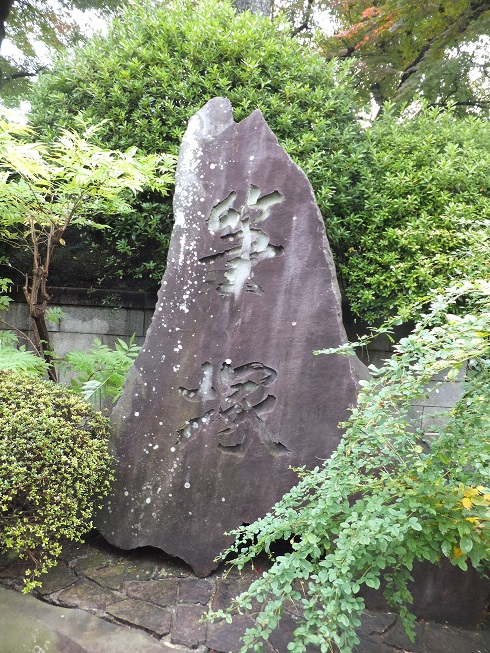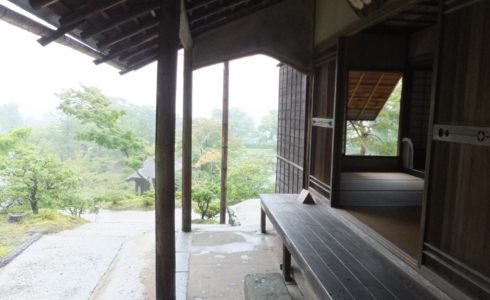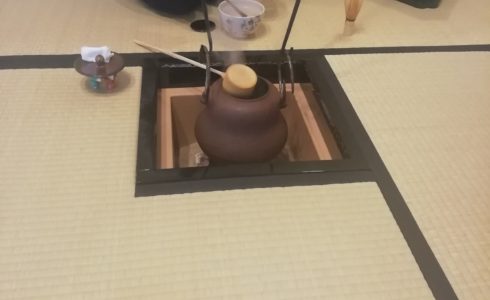
Beliefs That Have Influenced Japanese Culture
My particular fields of interest are literature and architecture, but when I talk about something about literature or architecture, it becomes necessary to mention its relation to folk beliefs, religion and thought, so today I wrote about my personal views on religion and thought. (I only wrote about things that relate to my personal interests and my personal experiences around me, so this is not representative of the religious views of the Japanese people.)
When I was little, there was a shrine in my neighbourhood and its grounds were one of my playgrounds. On New Year’s Day, my family and I would go to the shrine to pay our respects, and as Christmas approached in December, it was explained to us that God would not give presents to children who did bad things. On the night of New Year’s Eve, I was impressed to hear the Buddhist temple bell being rung 108 times for the New Year’s Eve. So I understood that it seems that God and Buddha take turns watching over humans to make sure we don’t do anything wrong.
I went to public kindergarten, primary school, junior high school, high school and university, so I was not directly taught about any religion or philosophy at school. I heard that some people go to Buddhist schools or Christian schools. In my case, the first opportunity to learn about religion and philosophy came during the university entrance examinations, when I had to study a subject called “Ethics and Politics and Economics” on my own in order to enter the Faculty of Literature from a science class.
As for “Shinto”, Japan’s own religion, according to the reference book “Glossary of Ethical Terms” that I used in high school, it is explained that “the Japanese believed that natural phenomena such as rain, wind, storms and thunder, as well as huge stones, trees, mountains, the sea, the sun and animals, had strong powers and were worshipped as gods”. It is also explained that “Shinto was established on the basis of folk belief in the gods”, “Shinto was made into a national religion in the Meiji period”, and “Shinto can be found in folk beliefs such as folk rituals and festivals”.
Recently I read a book of my father’s research findings on the Chinese novel “Journey to the West” and found it interesting to see how folk beliefs appear in poetry and in stories. It seems that Chinese folk beliefs and Japanese folk beliefs are not necessarily the same, but there are some similarities.
The Japanese ethics are also influenced by Confucianism. Confucianism is the philosophy of Confucius (c. 551 BC – 479 BC), a Chinese thinker who believed that expressions of respectful behaviour towards others form the basis of etiquette and social norms. During the Han dynasty (206 BC-220 BC), Confucianism took its place as a just academic discipline in China. Confucianism is said to have been introduced to Japan in the 5th or 6th century. During the Edo period (1603 – 1868), Confucianism was treated as a justification for the feudal system of status.
One of my own ethical principles, which I was taught as a child, is that I should not do to others what I would not want them to do to me. I later learned that this was a saying of Confucius. This principle applied to many things, including not deceiving people, or acting dishonestly.
One more example of what I believe to be Confucian influence is the way we behave at tea ceremonies. I’m learning about Japanese tea ceremony now, and there are certain ways of bowing and entertaining guests in the tea ceremony, which I think is also influenced by Confucianism. I think it’s an important part of understanding Japanese culture.
Another foreign idea that has had a great influence on Japanese culture is Buddhism. Buddhism teaches rationality, equality and respect for life, and is characterised by peace and tolerance. Buddhism is believed to have been introduced to Japan via the Korean peninsula in 538.
When I was a high school student, I was struck by the books that I read that reflected Buddhist ideas. For example, I read a novel by Yasushi Inoue called “The Roof with a Tile Roof in the Nara Period”, which introduced the episode of a Japanese student who went to China during the Tang Dynasty (618-907) and a Buddhist monk, Ganjin. Ganjin attempted to travel to Japan at the request of the student, and he made five unsuccessful attempts. Due to underdeveloped navigational techniques of the time, it was difficult to cross from China to Japan. In his 12th year, 753, he succeeded in coming to Japan with more than 20 disciples. He brought to Japan the Buddhist rules, scriptures, Chinese books, sculptures, knowledge of medicine and food processing techniques such as natto. The novel is based on a true story and I was moved by the great fortitude of Ganjin, but at the same time I was impressed by the fragility of human life, as many people and precious things are lost at sea.
Click here for a website about Ganjin and the Toshodaiji temple he founded.
Later, in the Department of Architecture, I had the opportunity to learn about the oldest wooden building in Japan, Horyu-ji, and I was able to understand the great cultural influence that Buddhism had brought, even from the aspect of architectural technology.
Click here to visit the Horyu-ji website.
As for Christianity, along with looking at textbooks and reading books about music, art, architecture and history, I find that European culture and thought are deeply related to Christianity. I am also interested in Christianity because Japan is also learning from such ideas developed in Europe.
Finally, I would like to share with you something that I found interesting recently in Japanese folk beliefs. In a temple called Gokokuji, near my office, there is a cenotaph called a brush mound. This is where used brushes are enshrined as sacred objects. I thought it was nice to enshrine the brushes that we no longer need, instead of just throwing them away, because it shows our appreciation for things.







